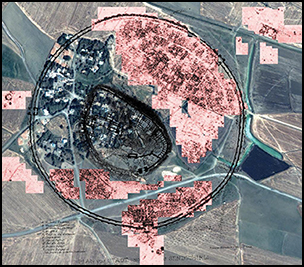Article contents
Exploring the lower settlements of Iron Age capitals in Anatolia and Syria
Published online by Cambridge University Press: 20 January 2017
Abstract

The capital cities of early Iron Age Syria and Anatolia have been extensively excavated, but their lower towns—where most of the populace actually lived—remain under-explored. In 2014, an intensive surface survey was undertaken across the 16ha lower town of Tell Tayinat, capital city of the Iron Age kingdom of Patina, in what is now southern Turkey. Results indicate clear spatial distinction between dense and sparsely occupied zones, an uneven distribution of wealth and localised craft production. The lower town seems to have been occupied by a diverse array of people and interest groups, with varying degrees of social status, including some elite households, but predominantly less wealthy and powerful than their neighbours on the acropolis.
- Type
- Research
- Information
- Copyright
- Copyright © Antiquity Publications Ltd, 2017
References
- 8
- Cited by




